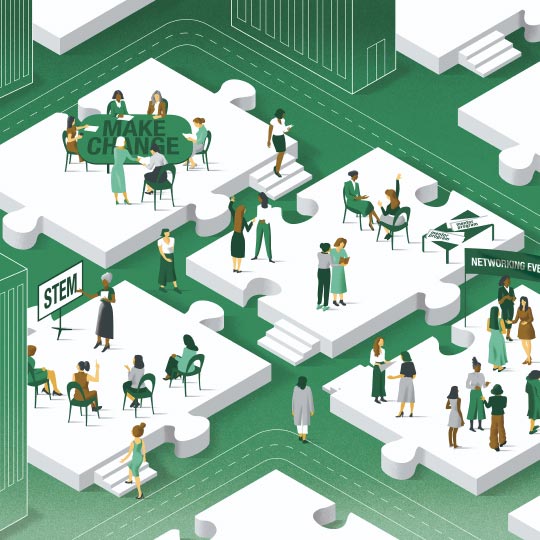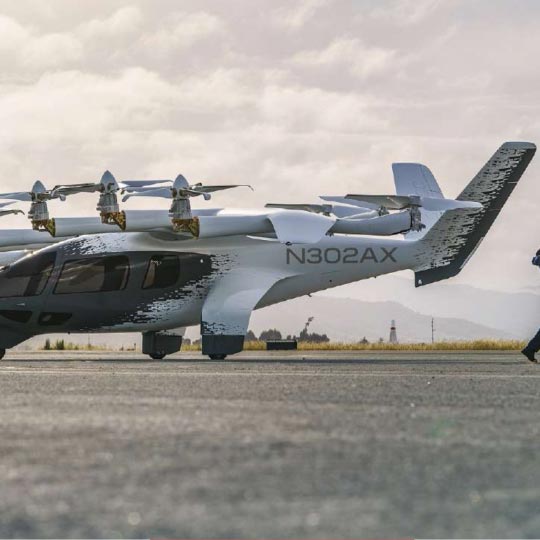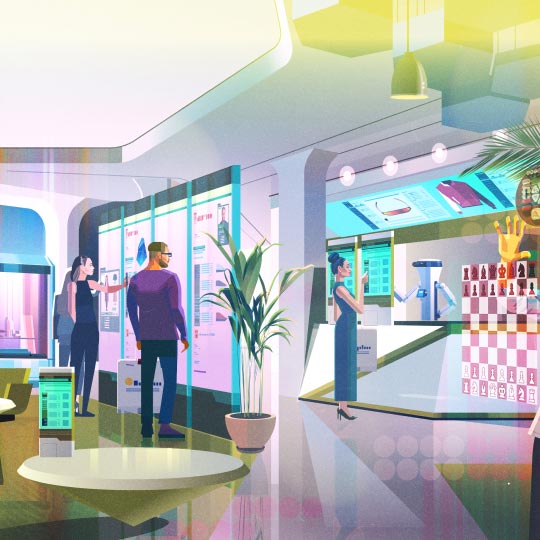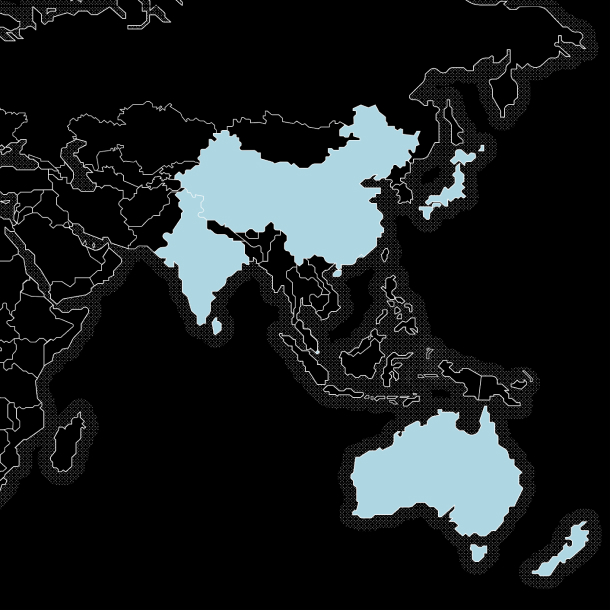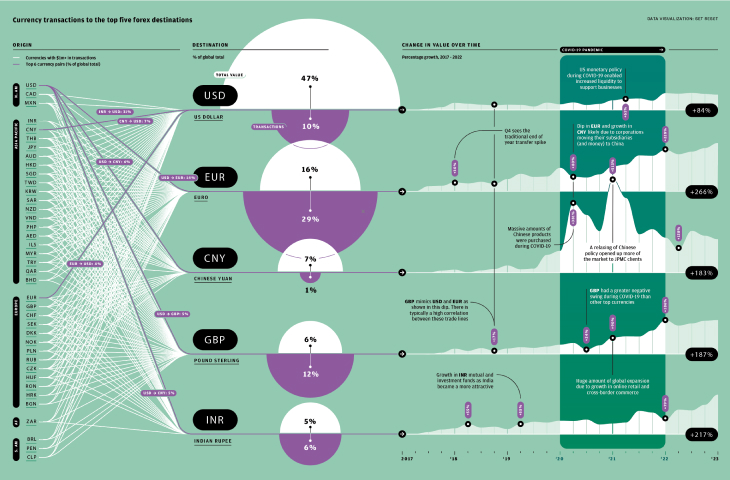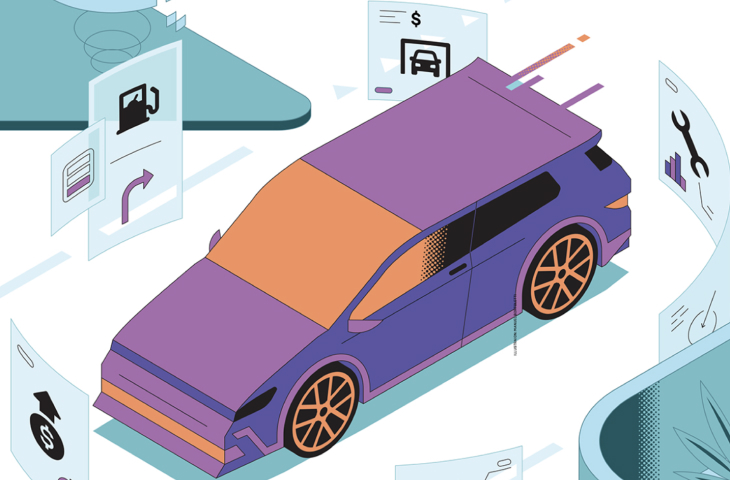
Will air taxis ever take off?
If they do, payments would fly co-pilot
REALITY CHECK
From Newark Airport in New Jersey to downtown Manhattan. This journey can take more than an hour by car and yet millions of people take it each year. Which is where Archer Aviation, based in California, spies an opportunity. Using electric vertical take-off and landing aircrafts, known as eVTOLs or air taxis, Archer hopes to enable people to complete the trip in a few minutes, for around $100 per head.
says Adam Goldstein, Archer’s Founder and CEO. “That’s trips that take 60-90 minutes on the ground that we can replace with a five-to-ten-minute flight in the air.” Archer is not alone in its mission. Powered by advancements in electric propulsion—motors, batteries, and electronic controllers—the eVTOL sector has gathered momentum in recent years, absorbing billions of investment dollars and producing a cadre of new businesses. Some of these are backed by major aerospace and automotive companies; startups such as Archer have gone public. According to a report by market research company IMARC Group, the global eVTOL market will reach $24.1 billion by 2028, growing at an average of 13.6 percent annually. Yet despite the hype, there are still no commercial services in operation.
So, what will it take for the eVTOL industry to break through the gridlock—and what would this new transport ecosystem mean for the world of payments?
The idea of urban air mobility has been around for more than a century, but its appeal has grown in major cities where the roadway infrastructure is bursting at the seams. In the past, it has been achieved by helicopters, but these are noisy which limits the number you can put in the air. Because they’re expensive to operate and maintain, they’re also generally reserved for the extremely wealthy.
EVTOLs take off and land vertically, just like a conventional helicopter. But since they’re electric, they produce fewer emissions and they’re potentially much quieter. The electric power train enables the propulsion to be distributed across multiple small rotors, which rotate more slowly, rather than relying on a single fast rotor.
This set-up is also potentially safer. The simplicity of an electric motor means there are fewer points of failure, and the impact of a failure is less because there are backup rotors. “With so many rotors you get a redundancy proponent and that redundancy can, in principle, improve safety,” says Farhan Gandhi, Director of Rensselaer Polytechnic Institute’s Center for Mobility with Vertical Lift. “For a helicopter you have one rotor. If that fails you have a disaster.”
There are several configurations of eVTOL aircraft, and they generally carry between two to six passengers including a pilot. The most conventional configuration is the “lift-plus-cruise”, which uses a set of rotors to lift the aircraft and another set to propel it forward. They don’t need a runway, so can arrive close to the destination, but their fixed wings also enable them to cruise like a plane.
Archer, founded in 2018, has raised more than $1 billion to launch its 12-rotor, lift-and-cruise eVTOL, called Midnight. By 2030, the company hopes to have 6,000 aircraft in the skies. It plans to begin by shuttling passengers between cities and airports because that’s where there’s particular customer demand. “Not only are the routes unpredictable from a time perspective by car, but you also typically want to build in some type of buffer there, to make sure you don’t have any issues,” says Goldstein. The company intends to launch a route between O’Hare and a Chicago heliport, in addition to the one between Manhattan and Newark, by 2025.
Chartering a helicopter is a complicated process, and for eVTOLs to become part of everyday life, the experience must be frictionless. The fintech world has an opportunity, therefore, to bring the hot field of “invisible payments” to these companies. The capacity of their trip-booking apps to incorporate smart “card-on-file” capabilities, whether through connecting to a digital wallet or securely storing card credentials on-cloud, would enable the payment for the flight to be triggered and completed in the background without the need for passenger input. The consent for the payment would instead be established at the flight booking stage, leading to a seamless customer experience comparable to ride-sharing apps.
In the future, eVTOLs themselves may come to represent a new platform for next-generation payment integrations. If these vehicles eventually fly longer routes—as some speculate—on-board systems could interface with the digital wallets on passenger phones to enable those passengers to easily pay for extras. This could include in-flight amenities such as Wi-Fi or music, as well as “upon landing” services—imagine disembarking to find a hot coffee waiting for you and a town car ready to go.
But reaching this future won’t be straightforward. Before any company can use their eVTOLs commercially, they must have their systems certified by the regulators, which is time-consuming and expensive. It’s made more difficult because there is a shortage of dedicated technical specifications for eVTOLs. “In principle, the pieces of the puzzle are in place,” explains Gandhi. “What needs to be demonstrated is safety.”
To date, not a single aircraft has been certified by an aviation regulator. In the US, there are four stages to certification with the Federal Aviation Authority (FAA). Archer has achieved the first.
There are also some practical questions about how eVTOLs will operate in a city. Will they go as the crow flies or will there be highways in the skies? How high will they go?
Also: Where will they land and where will they take off? Archer will use existing heliports, but new “vertiports”, as they’re known, will need to be built if they’re to satisfy the projected demand. In anticipation of offering air taxis by 2026, Dubai has unveiled plans to build four vertiports, each with two launching pads, and there are also moves to build them in various European cities. But it’s not always easy to find space in densely packed urban environments.“The policy part, the infrastructure part, and the regulation parts are lagging behind the technology,” Gandhi continues.
According to Gandhi and Goldstein, it’s only a matter of time before companies obtain the required certification, because they’re already working with the regulatory boards. While this is going on, they expect that the practical preparations for eVTOLs will accelerate. The FAA, for instance, has released vertiport design standards that specify safe dimensions for takeoff and landing areas.
Within a decade, Gandhi and Goldstein expect we’ll see these machines whizzing across city skylines, and as confidence in them grows, intricate networks should too. But how many of them fly, and how often, depends largely on the public’s response.
“There is already a degree of community acceptance in eVTOLs, because helicopters exist and fly these same routes every day,” says Goldstein, “but if you put more of them in the air, that might change.”
Further ahead, provided battery capacity develops, there’s the prospect of those regional eVTOL trips becoming reality. “The question is not whether eVTOLs will become mainstream,” Gandhi adds. “The question is more to what extent.”
WIRED
SOURCES AS PER WIRED, AUG 2023
IMAGES: ARCHER AVIATION INC. PRESS ASSETS AUGUST 2023





